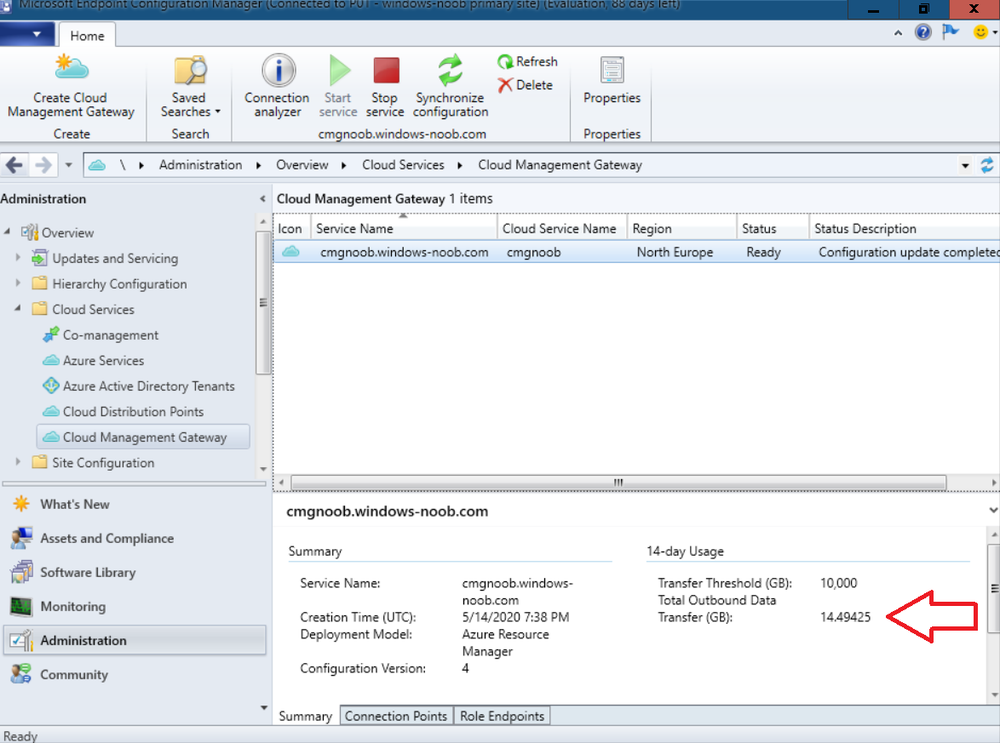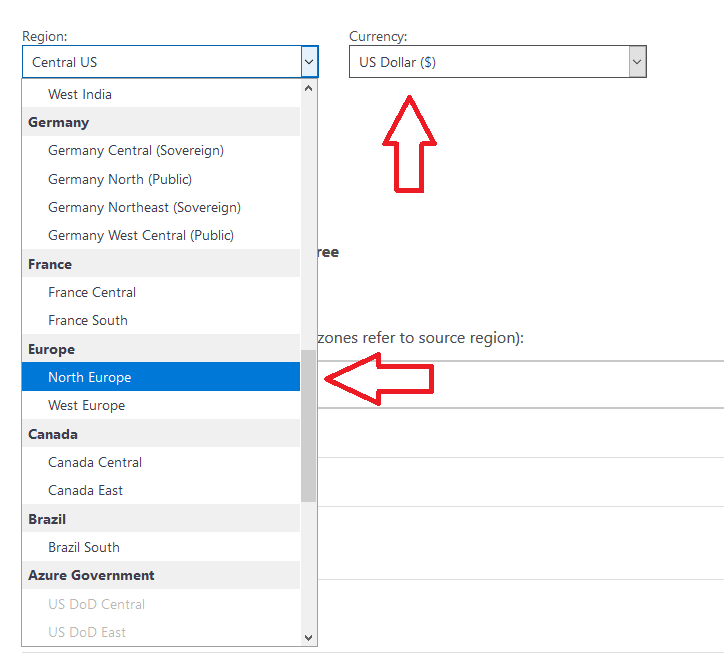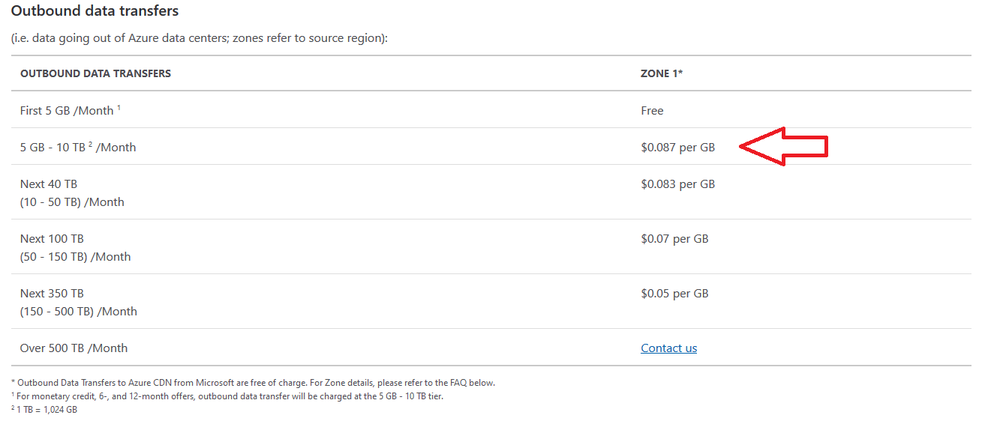-
Posts
9246 -
Joined
-
Last visited
-
Days Won
368
Everything posted by anyweb
-

CCMS client installation fails
anyweb replied to Shaabash's topic in System Center Configuration Manager (Current Branch)
did you look at the log yourself ? in there you can see this <![LOG[Current AD site of machine is Default-First-Site-Name]LOG]!><time="11:22:41.865-120" date="06-16-2020" component="ccmsetup" context="" type="1" thread="9832" file="lsad.cpp:814"> <![LOG[Attempting to query AD for assigned site code]LOG]!><time="11:22:41.865-120" date="06-16-2020" component="ccmsetup" context="" type="0" thread="9832" file="lsad.cpp:2176"> <![LOG[Performing AD query: '(&(ObjectCategory=MSSMSRoamingBoundaryRange)(|(&(MSSMSRangedIPLow<=167829634)(MSSMSRangedIPHigh>=167829634))))']LOG]!><time="11:22:41.943-120" date="06-16-2020" component="ccmsetup" context="" type="0" thread="9832" file="lsad.cpp:700"> <![LOG[Performing AD query: '(&(ObjectCategory=mSSMSSite)(|(mSSMSRoamingBoundaries=10.0.224.0)(mSSMSRoamingBoundaries=Default-First-Site-Name)))']LOG]!><time="11:22:41.995-120" date="06-16-2020" component="ccmsetup" context="" type="0" thread="9832" file="lsad.cpp:700"> <
Management Point issue
anyweb replied to SHASHIDUBEY01's topic in System Center Configuration Manager (Current Branch)
pasting a few screenshots of actual logs isn't going to help, can you zip up the logs and pm me a link in case you are worried about others reading them ? -
first things first why are you installing version 1606, it's out of date and not supported, you should be using the latest version of Configuration Manager which is 2002. secondly, did you make sure to distribute the boot images to your dp after adding the new drivers ? can you enable PXE support and press f8 at boot and grab the SMSTS.log file and attach it here cheers niall
-

Issue after Click on Install in sccm setup
anyweb replied to rspe's topic in Configuration Manager 2012
you could try the advice here http://eskonr.com/2019/04/sccm-secondary-site-upgrade-failed-to-create-process-of-setupwpf-exe-return-value-1/ -
Having your Bitlocker Management keys stored on your on premise database (ConfigMgr) is an asset to many customers, and also gives you time to migrate to Intune and see the different ways it can manage your recovery keys, you could create an Azure web app proxy to connect back to the on-premise server handling the requests.
-
Introduction I recently blogged about using a Cloud Management Gateway to serve content for task media support for cloud based content and that blog post got a lot of likes and retweets on Twitter. In addition, there were several questions including one about the cost of doing these cloud based operating system deployments. This blog post will hopefully assist you with doing just that, finding out how much your Cloud Management Gateway is going to cost for OSD related content (stored on the cloud distribution point in your CMG) using the new features available today in Technical Preview 2005. The cost of egress Egress is another way of saying data downloaded (or data out). To figure out the cost, in your Configuration Manager console, take a look at the Administration workspace and select Cloud Services, expand Cloud Management Gateway and select your CMG. In this view, take note of your Total Outbound Data Transfer (GB). Now that you've got that figure, head over to the following Microsoft website. https://azure.microsoft.com/en-us/pricing/details/bandwidth/ Next using the drop down menus select the Region that corresponds to your CMG's location (you can see that in the ConfigMgr console, in the Region column) and then select the Currency that you want to use. You'll notice that data going into Azure data centers is Free, but data going out (egress) is not. As my content transferred out was approx 14GB I choose the second row which is between 5GB and 10TB per month, at a cost of $0.087 per GB. Using Windows handy calculator application, the results are shown below. Yeah that's not a huge cost ! $1.25 USD, that's peanuts !! What about other costs ? But of course there may be additional costs, and these are detailed here. Remember that a CMG is in itself a virtual machine hosted in Azure. https://docs.microsoft.com/en-us/mem/configmgr/core/clients/manage/cmg/plan-cloud-management-gateway#cost And within the Configuration Manager console (Technical Preview 2005 screenshot), you can see a cost estimation using the Cloud Cost Estimator. Browse to the Monitoring workspace, select Security and then Cloud Management and in there you'll have some nice charts and graphs, including a total monthly cost estimate and monthly cost per device. Note, by default, the tool shows data based on the following settings: Only laptop devices Client policy only, not content 30 days of client usage data 10% of the total clients simultaneously communicating with the cloud service to get a more accurate estimation, click on Options (you may need to increase your monitors resolution to see the popout window). Select your Region and number of CMG's from the options available, note how the cost changes accordingly. Fyi, Johan blogged about the the cost of CMG content 'in the real world' here I hope you found this helpful cheers niall
-
but are you testing on windows 10 1909 with the may update ?
-
probably to add an additional layer of security to the CA, as the OCSP and CRL's are on an internet facing server whereas the CA is not
-

Management Point issue
anyweb replied to SHASHIDUBEY01's topic in System Center Configuration Manager (Current Branch)
Management Points are for getting policy (and sending state messages), distribution points are for downloading your apps, updates, os and so on, so is your issue that users are download from the wrong DP or communicating with the wrong MP ? have you enabled Preferred Management Points ? attaching logs from a client with the issue would greatly aid us here in understanding your problem -
this is what I got from Joe @ Lenovo https://forums.lenovo.com/t5/Enterprise-Client-Management/Windows-defender-scans-cause-100-CPU-usage-on-P1-Gen2-model/m-p/5018214 For my next test, I patched the 1909 factory preload with the May 2020 cumulative update. After doing this, I could not reproduce the problem. i guess it's your post also ? have you tried this ?
-
To receive a guaranteed $25 Amazon voucher, sign up to a free trial of Altaro Office 365 Backup and answer these two questions correctly! Which 4 different restore options are available for restoring Mailboxes? Which 3 different granular restore options are available for restoring Sharepoint files? What are you waiting for? Register for your FREE Trial, answer the two questions correctly & receive a guaranteed voucher. Submit your answers via email to win@altaro.com. Closing date: 9th of July 2020. Good Luck! T&C: One entry per participant, only correct answers will be considered eligible. Please note that this is only open to new Altaro Office 365 Backup triallists.
-
and you are seeing it only on ThinkPad P1 Gen2 ? have you looked into any of the bios settings to see if enabling/disabling anything secure related (for testing) changes the behaviour ?
-
are you also using the same version of Windows 10 as the original poster ? have you tried a newer release (like 1909 or 2004)
-
are these Lenovo's patched up with the latest BIOS and firmware updates ?
-
Introduction This blog post is basically my own troubleshooting flow after a recent Autopilot failure at work. The failure was linked to application installation and the cause was interesting. To verify what was going on I compared a failed Autopilot logs with a known good Autopilot log set side by side. The test computer at my desk consistently succeeded with Autopilot, while the users computer consistently failed during the Enrollment Status Page phase. I will explain what’s happening in the log to give you an overview how to troubleshoot it yourself going forward. Looking for clues in the logs The log in question here is the IntuneManagementExtension.log found in C:\ProgramData\Microsoft\IntuneManagementExtension\Logs. Here is the section from the IntuneManagementExtension.log where it detects apps required for the ESP (Enrollment Status Page). This is taken from the failed Autopilot machine and at this point everything looks OK. Here is the same section from a known good Autopilot session. The log then adds info about each of these apps to the registry On an Autopilot deployed pc (or intune managed) you can find these registry entries in the following location: Computer\HKEY_LOCAL_MACHINE\SOFTWARE\Microsoft\IntuneManagementExtension\Win32Apps\{USER GUID}\{APP_GUID} The USER_GUID will more than likely be different on each computer unless the same user is used on both computers. In the below screenshot I've expanded the USER_GUID to reveal several GUIDs that match Win32 applications installed on that computer. The ESP (Enrollment Status Page) set’s the status of each of these apps. [Win32App] CreateNewInstanceForWin32App setting appInstallState NotInstalled with userSID for Win32App_3dfa3b3b-83a4-4ed9-a7cf-a8376136ab26_1 And after some logging it starts processing each application in turn, notice how it now shows the app GUID and the apps friendly name, including whether there are application dependencies or not. The starting process for each application logging starts with the following line. [Win32App] ExecManager: processing targeted app The log then sorts out what it’s doing in steps such as below for each app. [Win32App] ===Step=== Start to Present app 3dfa3b3b-83a4-4ed9-a7cf-a8376136ab26 [Win32App] ===Step=== Detection rules [Win32App] ===Step=== Check applicability [Win32App] ===Step=== Check Extended requirement rules [Win32App] ===Step=== Check detection without existing AppResult [Win32App] ===Step=== Download [Win32App] ===Step=== ExecuteWithRetry [Win32App] ===Step=== Execute retry 0 [Win32App] ===Step=== InstallBehavior MicrosoftEdge, Intent 3, UninstallCommandLine STABLE [Win32App] ===Step=== Detection rules after Execution [Win32App] ===Step=== Set ComplianceStateMessage with applicationDetectedAfterExecution [Win32App] ===Step=== Set EnforcementStateMessage All those steps above should describe the process from start to finish of each required app within the ESP. According to the log, this application installed correctly, and the application type was .bin as this app is Edge Chromium and Edge Chromium is treated differently to ‘normal’ Win32 applications (.intunewin). Next it cleans up the staged content and verifies the installation state and finally checks if the ESP is finished yet, if not it progresses to the next app. So the first application installation was successful, which is great. Let's move on to the next app in the list, and it’s Chrome as revealed in the log. Proceeding through the steps we can see that it fails in the ===Step=== Download phase Just for comparisons sake, let's compare that failure section to the same section from a working machine What do the errors mean ? The app install fails with the following error line: JobError callback (Context: BG_ERROR_CONTEXT_NONE; ErrorCode: 80072EFD) for job 4abe5657-ae62-41be-8a3b-2f88e7f460cc Looking at the first reference, a search on the internet for BG_ERROR_CONTEXT_NONE brings me to these Microsoft doc links https://docs.microsoft.com/en-us/windows/win32/api/bits/ne-bits-bg_error_context https://docs.microsoft.com/en-us/windows/win32/delivery_optimization/bg-error-context And strangely BG_ERROR_CONTEXT_NONE translates to… no error: BG_ERROR_CONTEXT_NONE An error has not occurred. But the second error code is indeed an error.. Job has failed. Error: 80072EFD Job 4abe5657-ae62-41be-8a3b-2f88e7f460cc (BG_JOB_STATE_ERROR) failed to complete, cancelling... Using the Error Code lookup ability in CMTrace, I checked the 80072EFD error code and it translated to: Looking for clues in Endpoint Manager Looking in Microsoft Endpoint Manager, for the device in question and then selecting Managed Apps, and typing in the name of the application clicking on the Chrome app that failed I can see the following. Clicking on Show details should reveal some more information. And this does indeed sound like either a network problem (see first message) or quite possibly a Background Intelligent Transfer Service (BITS) related problem. BG_E_ERROR_INFORMATION_UNAVAILABLE (0x8020000F) Error information is only available when the state of the job is BG_JOB_STATE_ERROR. The error information is not available after BITS begins transferring the job's data or the client exits. https://docs.microsoft.com/en-us/windows/win32/bits/bits-return-values Back to IntuneManagementExtension.log log, I looked for the next app installation attempt, and the app was Cisco WebEx Meetings, a Win32 app. [Win32App] ExecManager: processing targeted app (name='Cisco WebEx Meetings', id='6e1e9458-26ba-406a-bdc6-2a27dc3ec905') with intent=3 for user session 0 And just like with Chrome, this app again fails to download. further down in the log I noticed this nugget... Exception occurs when downloading Win32App user session 0, the Exception is System.Net.WebException: Unable to connect to the remote server ---> System.Net.Sockets.SocketException: No connection could be made because the target machine actively refused it xxx.xxx.xxx.xxx:80 at System.Net.Sockets.Socket.DoConnect(EndPoint endPointSnapshot, SocketAddress socketAddress) Wait what ? No connection could be made because the target machine actively refused it xxx.xxx.xxx.xxx:80 So using whois I traced the IP address in the log and it turns out to be a Network services (telecommunications) provider. A content delivery network.... pulling more data out of the log relating to the actual content it was trying to download (and from where...) and checking swdb02.manage.microsoft.com revealed that the IP address blocking connections also belongs to Microsoft... I'll update this post with further information later if we determine why that content provider blocked the download of applications causing the ESP to report a failure. Summary Sometimes you have to really dig into the logs to determine where the failure actually occurred, I hope this gave some clarity of the process. cheers ! niall
-
sure it will work, but you might have to do additional tasks, i will modify the two parts that refer to this and point out that if you don't run the PowerShell script to automatically create users and ou's, that you'll have to do that manually otherwise other steps may prompt errors. I already tell users to manually create the users, but i didn't mention to manually create OU's, i just assumed they would understand that based on the screenshots, I'll update it. thanks for your two cents.
-
i feel your pain, if you'd like to pm me some numbers of users affected i can ask Lenovo Engineering to take a look cheers niall















